Pumi is an active, fun-loving, and happy-go-lucky dog breed that is a perfect combination of a cuddly companion and a dedicated working dog.
Pumis are adorable, fluffy, and fuzzy canines are not only the cutest dogs but also super energetic. Don’t let their medium-small bodies fool you since they are fearless working dogs, with impeccable guarding and herding skills.
On top of this, their wee bodies pack huge brains and that’s the very reason why, despite having whimsical expressions and elegant woolly coats, they are more popular for their intelligence and temperament.
So without further ado, let’s have a closer look at this dog breed to find out whether it matches our definition of the perfect pet dog or not. Let’s begin!
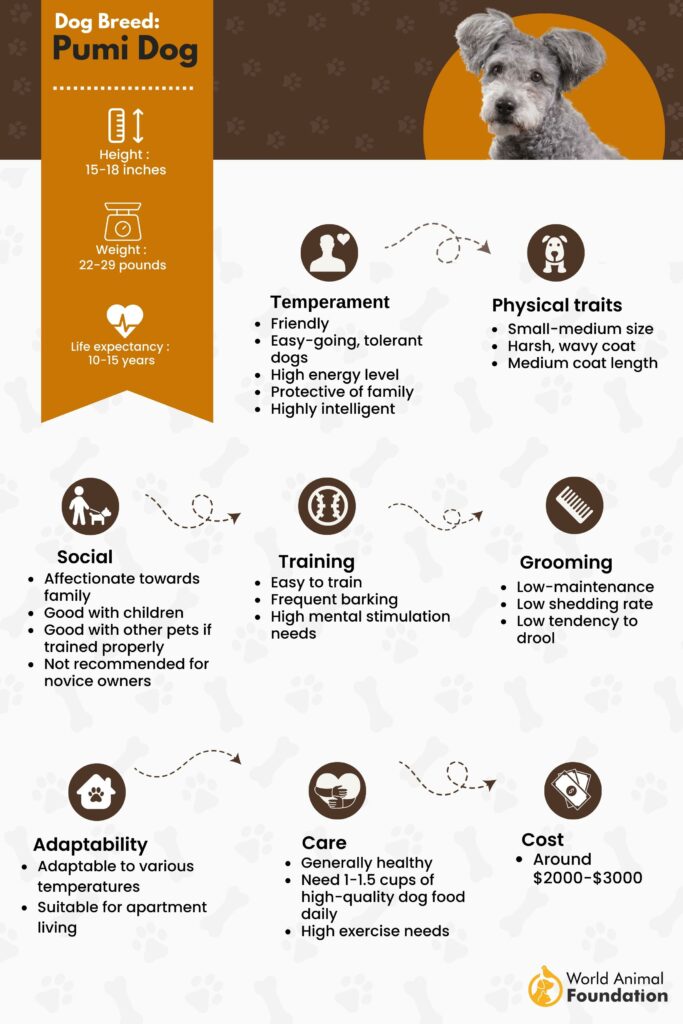
About the Breed
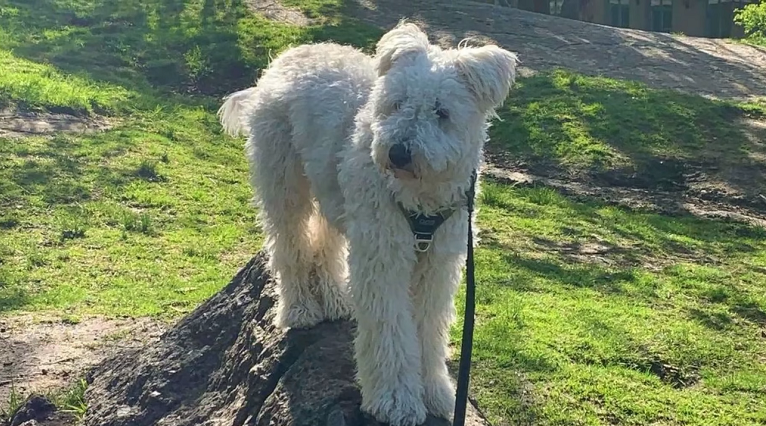
Pumi belongs to western Hungary and falls in the category of herding dogs. This distinct breed features a signature double coat with corkscrew curls and athletic bodies. At first glance, one may think of this dog as a fancy toy canine, but that’s not the case.
This breed was originally developed to make a compact herding dog that can herd, control, and guard livestock. So, the intelligence, agility, and energy levels Pumi dogs feature today are transferred to them by their descendants.
Considering this, the modern-day Pumi canines come with insane needs for exercise and activity, so the best prospective owners for them will be people who are fun-loving and are not couch potatoes, for sure.
Pumi also makes good family pets since they are not only affectionate and devoted but also quite protective of their family members. They won’t see you as their owner but as their herding group of flocks. However, their friendly nature doesn’t make them very good guard dogs, but as a watchdog, they can do wonders.
Regardless of how sleepy or busy a pumi dog is, he always keeps an eye on the gate. After seeing a stranger approaching, these dogs will bark without any pause to alert you about invaders.
A notable part here is that these dogs are quite vocal and always talking, in the form of barks, whines, and howls.
Pumi can also bark out of boredom, and not only bark, but this dog also comes with high tendencies to show destructive behavior, when not getting enough attention and mental stimulation. Due to these reasons, the Pumi dog is more compatible with the country lifestyle, in the distanced neighborhood.
Moreover, they stay happy in big houses with bigger yards where they can run freely and engage in dog sports. Thankfully, Pumi dogs are quite open to training which means, if you are an experienced dog owner who knows how to teach canines good manners, this dog will be more fun to be around than a hassle.
History of the Pumi Dog

Although the Pumi dog breed is quite new to America (since it has been recently recognized by the national breed club of America), its roots go back to 800AD. It is believed that the Magyar people, when migrated to Carpathian Basin from the Ural-Alty region, brought the ancestors of Pumi canines.
In those days, no one was interested to develop dogs with good looks and adorable expressions since working dogs were more in demand back then. As mentioned before, the breeders developed Pumi for herding livestock through narrow pastures.
In addition to herding cattle, herders of that time also wanted an intelligent working dog that can prevent their animals from getting lost or straying off, stay alert to threats, and keep close to the stock, without getting constant instructions from the shepherd.
And most importantly, that dog should have to have his own mind with which he can make decisions when his owner won’t be around. Thus, after crossbreeding various shepherd dogs of that time, breeders were able to develop three herding breeds; Puli, Mudi, and Pumi.
Puli is considered the oldest herding breed, sharing the bloodlines with the other two breeds. It is also believed that after around three hundred years and continuous crossbreeding of Puli dogs with other herding dogs, the Pumi dog was produced.
Since both dog breeds possessed super close resemblance, they were considered the same breed till 1900. In the early 20th century, a Hungarian professor of veterinary medicine finally took the initiative to draw a definite breed standard, which differentiated pumi from puli.
The very first Pumi dog entered America in the year 1980, whereas the same dog was imported to Finland quite earlier (in 1970). Today, Finland is the country with the highest pumi population.
The two major breed clubs, including the American kennel club and the Uk kennel club, recognized Pumi in 2016 and 2015, respectively. However, the Hungarian pumi club was formed in America, in 2005, to enhance and promote breed quality.
Pumi Facts
Let’s have a look at a few interesting facts about Pumi:
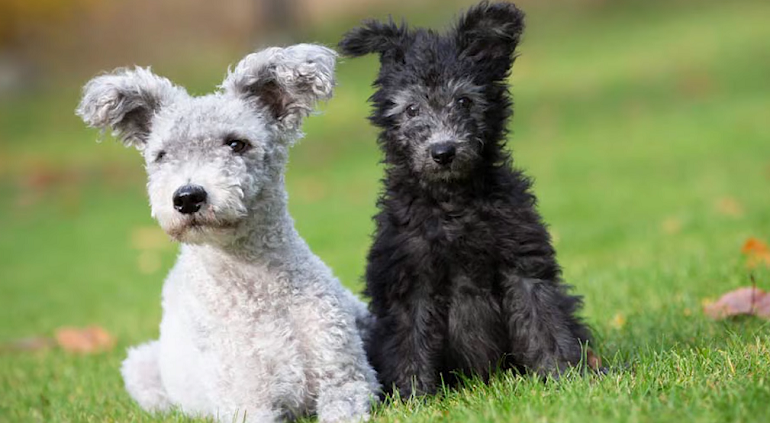
- The life expectancy of Pumi is 10-15 years.
- Pumi is not too slobbery since they have a low tendency to drool.
- In a single litter, about 4-6 pumi puppies are born.
- Despite having a dense and super-fluffy coat, pumi canines are low shedding.
- Pumi canines are not only unbeatable in agility games and fetching, but they are also very good swimmers.
- Since pumi don’t feature a 100% non-shedding coat, they can’t be considered hypoallergenic.
- Despite having such impressive willpower and intelligence, these dogs are often called clowns, for retaining a mindset even on reaching adulthood and for having such comical, tufted, expressive ears.
- Pumi has tendencies to wander off or escape, therefore they must be contained in a properly fenced property.
- Pumi pooches can withstand both hot and cold climates. However, they can’t handle extreme temperatures.
- This dog breed faced a disastrous decline during the world wars, during which it got nearly extinct.
Pumi Appearance
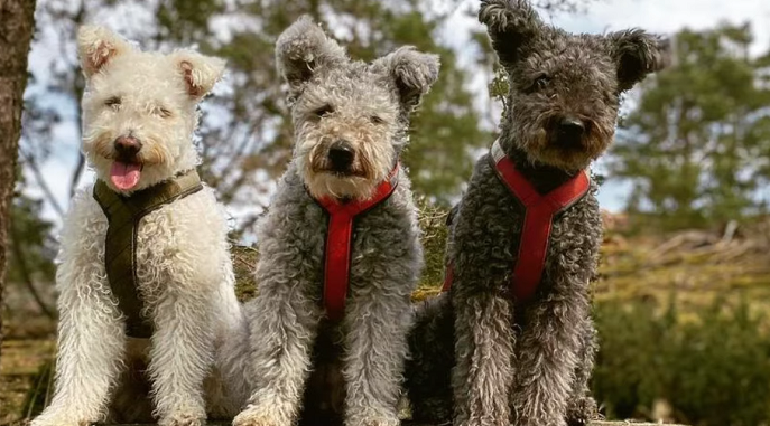
The very first thing that you’ll notice in a Pumi puppy is their semi-erect ears that tip forward and stand upright, at the same time. In addition to this, Pumi features dark eyes, elongated muzzles, a square body outline, an arched tail, and powerful legs.
Size
As mentioned before, a pumi dog is usually of small-medium size. Its male may grow up to 41-47cm whereas the female might be 38-44cm tall.
Weight
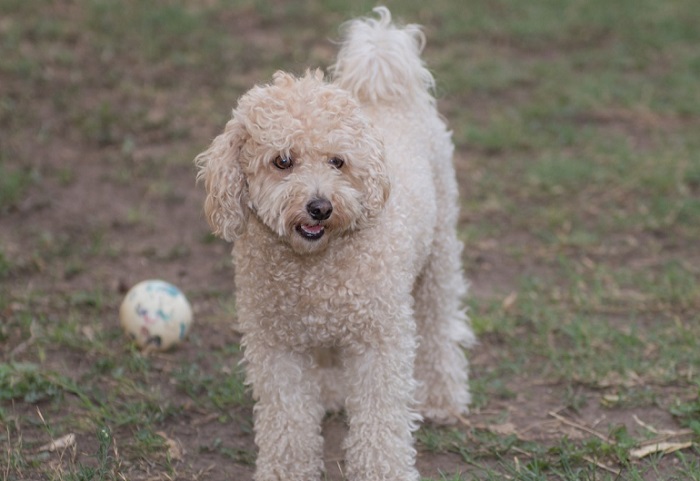
Due to being taller, male pumi weigh heavier than females. The average, healthy weight range in Pumi males is 10-15 kgs whereas that in Pumi females is 8-13 kgs.
Coat
Pumi’s coat consists of both a harsh outer coat and a smooth inner coat. However, the outercoat grabs the attention of every passerby with its corkscrew curls. Overall, this double coat gives the impression that the dog is clothed in wavy and curly hair.
The hair doesn’t feel smooth to the touch but corded. The length of this hair can be 4-7cm and therefore considered medium, whereas the coat density is also medium.
However, the hair is denser around the ears (for protection purposes), whereas they are lighter around the foreface and eyes.

Color
You’ll find a wide variety when it comes to Pumi’s coat colors. For example, they mostly come with naturally grey coats. These grey coats might also be of various shades. Similarly, they come in solid black, white, and fawn shades, too.
Some Pumi also features a one and a half inches marking on the chest and toes, but it’s not much appreciated. It doesn’t matter what the coat color is, a healthy Pumi would have slate-gray or black skin.
Pumi Temperament and Personality
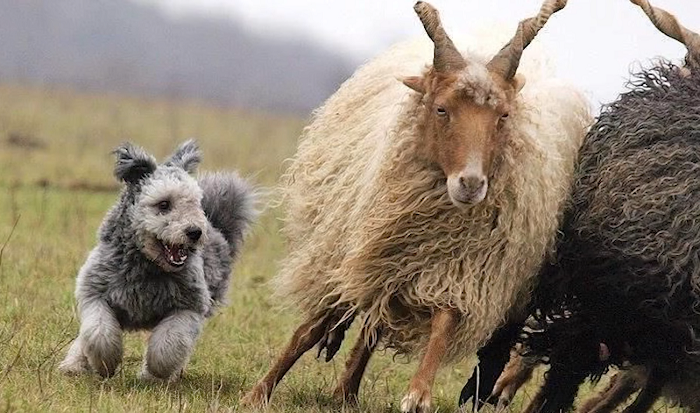
Pumi were developed to do tough jobs, and if we consider their job description, we can clearly see how intelligent, independent, responsible, and active this dog would be. Since it has high herding instincts, it wants to take charge of every situation.
Considering this, the pumi canine might get extremely cranky, after not getting proper obedience training. If you won’t teach him to obey your commands, he will think of himself as the one in charge and start to herd people.
On the other hand, these dogs go easy with children, other dogs, or any other animal you have in your pet family, including cats. However, like most herding dogs, they also have strong temptations to chase smaller animals. Therefore, it’s better to supervise the interaction.
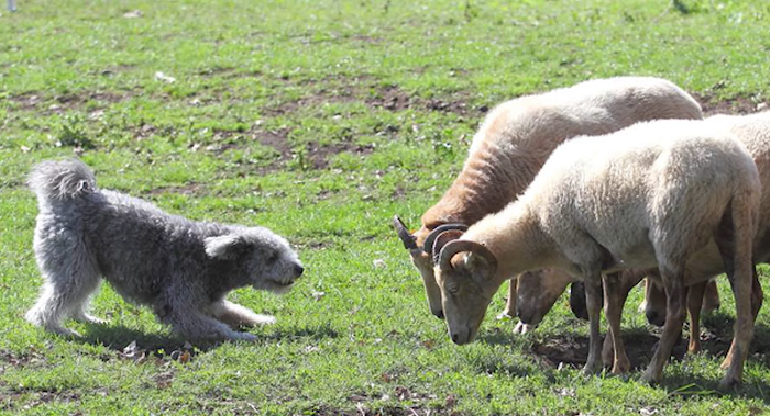
Pumi can be trusted with children since they are not aggressive at all, but we sure can’t trust the behavior of children toward these cute dogs. They might treat these furry animals too harshly, when not supervised.
Pumi might be reserved towards strangers or bark a lot after seeing a stranger near your property but then, their friendly, easy-going nature intervenes. Due to this, it doesn’t take them too long to get settled with new faces.
Since they thrive on attention and physical activity, they can and should never be left alone at home, even for a short period. Doing so might induce separation anxiety in them which in turn, may lead to various undesirable behaviors.
So if, in any case, you can’t manage to stay with your pumi puppy, you better arrange a company for him or sign him up in a pet care center.
Pumi Health and Care
Although pumi is a healthy breed, they might develop some serious health issues such as follows
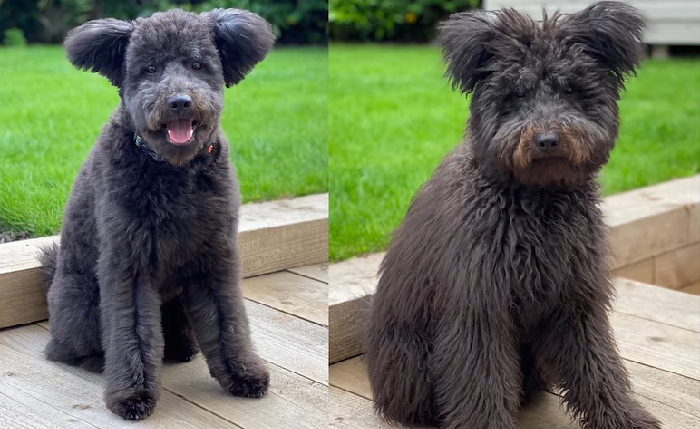
Hip Dysplasia
It’s mostly considered a genetic disease, but sometimes, it may also result from immense exercise and too-much heavy activity. In it, the hip bone begins to deform, causing the muscles of the leg (especially the thigh) to pop out of the joint.
Resultantly, whenever the dog tries to move, he feels an extreme level of pain in his lower body. If not treated, this problem might end up restricting the mobility of your canine properly.
Thankfully, with surgery, sufficient rest, and a few sessions of physiotherapy, this problem might be cured successfully.
Primary Lens Luxation
Primary lens luxation is a heredity disease in which the lens of the eye doesn’t stay affixed to its position. Resultantly, the dog has to suffer from severe inflammation in the eye cavity, and it eventually leads to blindness.
Patellar Luxation
It’s also one of those health conditions which are more likely to hit energetic dogs. In this, the kneecap dislodges from its position, causing it to slip out randomly. Resultantly, your dog faces difficulty to maintain a firm, stable gait. If diagnosed at a young age, this problem can be cured by physiotherapy and surgery.
Degenerative Myelopathy
It’s also a genetically transmitted syndrome that ends up damaging the spinal cord. Resultantly, the hind limbs of the dog begin to get paralyzed progressively. Although 100% successful treatment of this disorder is yet to be found, the mobility of the canine can be retained by physiotherapy.
However, the only way with which we can ensure the pup’s health is to go through the health clearance certificates of the puppy’s parents. Also, ask breeders about the DNA testing being performed on the pup or not.
Speaking of pumi’s care, feed them dog food, specially formulated for high-energy dog breeds, twice a day. To know about the correct portion size, as per your dog’s age and energy level, consult a vet.
Due to low-shedding coats, they don’t need too much time for grooming. Just brush your pump’s coat twice a week to prevent matting, wet it lightly, after combing, and let it air-dry to restore curls.
To keep your pumi healthy, both mentally and physically, undertake daily exercise for at least one hour. After every play session, check his paws, ears, nails, and tail for injuries.
Pumi Training
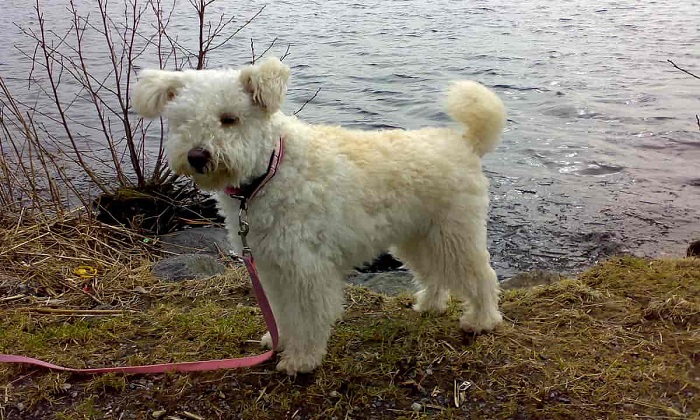
The pumi breed comprises super smart dogs which are easy to train. However, their independent thinking and herding instincts might intervene in the training process.
Due to this very reason, as we said earlier, it’s an ideal dog only for experienced dog owners. Still, if you want to adopt a pumi, prepare yourself accordingly by practicing patience and seeking advice from pet experts.
There’s no problem in starting training a pumi from an early age since according to experts, even a 16-year-old pup can absorb everything that happens around him.
So from this age, you better undertake pumi puppies under training for obedience, agility, and socialization. The thing on which you’d have to work the most is to suppress the excessive barking.
Don’t make the dog training too harsh or strict instead try to make it as fun as possible. Infuse it with rewards, praises, and games since the more your dog will enjoy his training, the quicker he’ll learn to behave desirably.
Remember that with dogs like pumi, only the positive reinforcement methods work best, so you better avoid all sorts of harsh, inhumane training methods. Below are some tips which can help train your pumi:
- Use verbal commands to teach your dog but never shout or penalize them for not paying attention.
- Don’t make the training session too long. Instead, it would be better if you keep the training sessions short and more frequent. For example, instead of training for 30 minutes daily, it’s better to conduct five sessions of five minutes.
- Pumis are more sensitive towards pats on the chest and under the chin as they consider them an act of affection. Thus, to praise or applaud your pumi during training, pat them in these spots rather than at the head or back.
- Whenever your pumi acts as per your instructions, reward him with his favorite treats to encourage an obedient attitude.
- Never let a pumi pup do anything which you don’t want an adult pumi to do. Remember that bad habits and patterns are extremely difficult to change, so it’s better not to let them develop from the very first day.
- Keep your tone gentle, happy, and encouraging while praising him or encouraging him to do something desirable. On the other hand, while stopping your dog from something or saying NO, keep your tone a bit hard and firm.
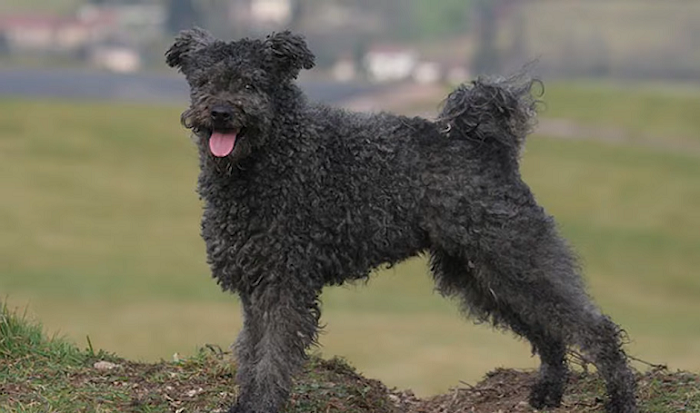
Conclusion
The average price of a pumi dog ranges from $2000-$3000. Since it’s a massive investment, make sure you are buying the healthiest pup, from the most responsible breeders.
Make sure the breeder employed good breeding practices and completed health tests for the individual dog.
Besides, you can also adopt your pumi dog from rescue organizations which will cost you much less than buying from reputable breeders.












